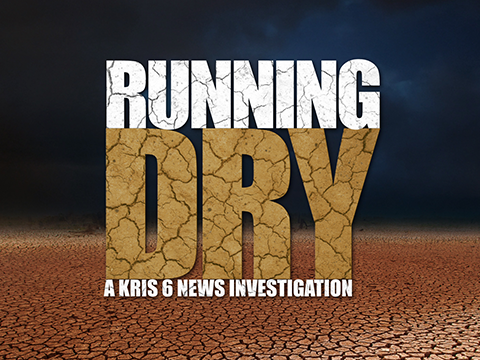CORPUS CHRISTI, Texas — For most Coastal Benders, Hurricane Hanna is already a fading memory as they deal with the pandemic and get on with their lives.
But the action is just getting starting for scientists at the Conrad Blucher Institute.
The research scientists there love a good storm.
That's because each storm is different and each one is an opportunity to learn and help make our coastal communities more resilient to future storms.
They're now in the assessment phase of Hanna's impact to accurately measure the extent of the damage.
And although the process isn't finished, Hanna was clearly a much different hurricane than Harvey.
“The water levels reached during Hanna were the highest ever recorded at Bob Hall Pier,” said Dr. Phillippe Tissot, interim director of the Blucher Institute. “And higher than Ike, or during the 90's tropical storms.”
The damage to the pier is a testament to the raw power of a hurricane.
The storm surge and heavy surf also caused severe damage to the sand dunes on the beaches.
And there was also substantial erosion on the shore of Corpus Christi Bay, because Hanna's southerly winds were just the opposite of Harvey's winds.
“With Harvey, it was the other way around,” Tissot said. “The winds were northerly - north northeasterly winds - so we had even larger surge and waves.
“But they were on the other side of Corpus Christi Bay, they were in Port Aransas and the backside of the islands.
All the little pocket beaches along Corpus Christi Bay that people have really been frequenting during the pandemic …
“They all experienced erosion not only on the beach itself which is transient to begin with, but also the bluffs which is going to compromise the integrity of those parks,” said Deidre Williams, coastal research scientist at the Blucher Institute. “We lost surface area of those parks such as Poenish where there were losses.”
Back out on the island, sand deposition was a big problem on parts of the beach where the storm surge gushed through the beach access roads.
“During that period of time when the water is surging up over the beach, it's bringing with it the sand and debris of the storm and it's pushing it up all these access roads,” Williams said. “It took an entire day for the crews out there to open whitecap road up.”
Now you might wonder, what's the purpose of all this data collection after the fact?
And the answer is to be better prepared for the next storm and to understand how to rebuild our coastal communities so they're stronger and more resilient.
“The data and the measurements are the essential foundation to plan accordingly,” Tissot said. “Like you said there's more people coming to the coast, we're a coastal city and we have to become progressively more resilient so we can accommodate these people and have a vibrant economy and be able to enjoy our environment.”
On a related note, Texas A&M-Corpus Christi plans to join forces with the Coastal Bend Council of Governments to create a regional resilience partnership.
The idea is to help build stronger communities to better withstand future disasters, whether they’re hurricanes or pandemics.
And the storm data being collected by the Blucher Institute will be a part of those efforts.




